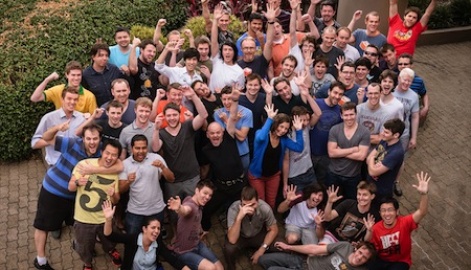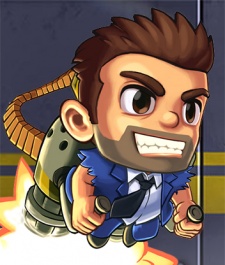Few developers embody the potential of self-publishing better than Halfbrick Studios.
The Brisbane, Australia-based outfit toiled for years developing licensed games for publishers on devices like the Game Boy Advance and the PlayStation Portable.
And while this approach offered Halfbrick some degree of success, it was only when the studio struck out on its own that it realised its full potential.
Now with globe-straddling hits like Fruit Ninja and Jetpack Joyride to its name, Halfbrick has ascended to the very top of the industry, with mobile as its primary focus.
In our latest company profile, chief marketing officer Phil Larsen reflects on that ascent, discusses the lessons Halfbrick learned along the way, and outlines the studio's quest to become one of the "all-time greats" of mobile development.
Contract work
Founded in 2001, Halfbrick started out working on licensed handheld games like EA's Ty the Tasmanian Tiger 2: Bush Rescue and THQ's Nicktoons: Battle for Volcano Island.
Hardly the most glamorous of work, it nevertheless afforded Halfbrick the opportunity to grow, learn and establish an industry presence.
"We wanted to get out of the publisher contract model eventually," says Larsen, "but we still look back fondly on the games we created, and are very aware that we learned everything we needed to become a successful studio because of those years in work-for-hire.
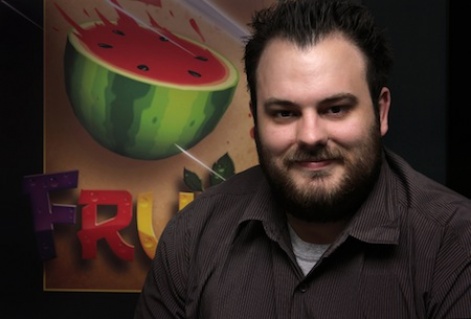
Phil Larsen
"We were primarily developing in GBA, DS and PSP - perfect precursors to mobile development in today's landscape.
"We built on what we learned and made amazing contacts in the industry all over the world," he continues.
"Everything we are today is because of that time and what we've achieved since then. No regrets, and great memories!"
Xbox Live Indie Games
It was only when Microsoft launched its Xbox Live Indie Games channel for Xbox 360 in 2009 that Halfbrick saw the opportunity to go its own way and self-publish.
"That was a very interesting time for us," says Larsen. "We saw all of these channels opening up, and any one of them could have exploded in popularity.
"We started off with a plan of four games, released one after another over the course of several months, building and making changes to subsequent games based on what we learned from the previous releases."
Unfortunately, however, thanks largely to mismanagement by Microsoft, XBLIG failed to live up to its promise. Despite this, Larsen is keen to focus on the positives.
"Despite the fact that it ultimately wasn't financially successful, [developing for XBLIG] established Halfbrick as an IP creator and actually grew our name far bigger than our sales showed," he says.
"We stuck to our guns for quality. People took notice, and we became a self-publishing company through determination and a constant will to learn."
PlayStation Minis
As Halfbrick's search for the ideal platform continued, the company shifted its sights to Sony's XBLIG equivalent, PlayStation Minis.
"On PlayStation, we were in on the ground floor for the Minis initiative," explains Larsen. "In actual fact, we created two games pretty much exclusively for that service - Age of Zombies and Aero Racer.
"I was fortunate enough to direct Age of Zombies personally, and it became a big hit in that space - the most popular Mini of 2010. We still have all the awards we racked up and display them proudly!"
Age of Zombies
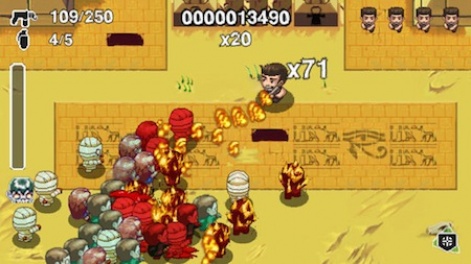
Yet, just like XBLIG, PlayStation Minis failed to flourish, something highlighted by the subsequent release of Age of Zombies on iOS, which far outstripped the performance of the original.
"We had pretty much maxed out Minis," says Larsen, so the search for a primary platform continued.
And while iOS seemed like a great fit, the studio wanted one more bite of the home console cherry. Halfbrick's next project would be its most ambitious project yet.
Xbox Live Arcade
Initially conceived for Nintendo DS, Raskulls is an action platformer that eventually found a home on Xbox Live Arcade.
In development for around two years, it took a vast amount of time and resources, far more than Halfbrick had initially intended.
"We're very proud of Raskulls, but yes, it took longer than we were comfortable with," says Larsen.
Raskulls should have been the title that ensured Halfbrick became one of the hottest indies around, and to a degree it did, with warm reviews and strong sales.
But by the time it came to market, another of the studios project's had make a far larger impact.
Raskulls
"Fruit Ninja was conceived, developed and released during the development of Raskulls," says Larsen. It changed the company forever.
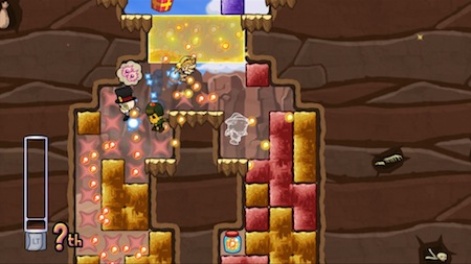
Fruit Ninja
"We have an initiative called Halfbrick Fridays, where everyone can pitch new ideas and prototype them," says Larsen.
"Fruit Ninja was one of those ideas; created by Luke Muscat, designed specifically as a one-screen touch based game. Straight up, it was a great, simple idea. I loved it from the first concept image.
"The original inspiration actually came from late-night infomercials where they slice stuff to demonstrate the amazing sharpness of this brand new knife set, available now with a special exclusive offer for credit card payments!
"They sliced a pineapple to display the awesome slicing power. Who could resist?
"As soon as we had it running on device, we knew it was special and put everything we could into its development."
While Raskulls would go on to shift 100,00 copies in its first year on XBLA, Fruit Ninja racked up 200,000 in its first month on mobile.
By May 2012, it had been downloaded 300 million times and was on one third of all US iPhones.
Multiplatform Approach
Fruit Ninja was evidence of the huge market that could be reached through mobile devices and Halfbrick was determined to lead the charge.
"The entire mobile market exploded," says Larsen, "and we really hit our stride, so it was really all hands on deck for mobile."
"That didn't mean we became a mobile-only studio though. We went right back to XBLA with Fruit Ninja Kinect, a project that made infinite amounts of sense."
Fruit Ninja
"In general, we will take a game anywhere if it looks like it will gel with the players, bring something new and exciting to the brand, and hopefully make some money. Fruit Ninja Kinect did all three."
Even experiments with new platforms that fail to take off are worth pursuing, says Larsen, citing an Age of Zombies port for Xperia Play.
"We picked the game that would play well on the platform, made the most of the unique features to Xperia, and bam - port done. It didn't set the world on fire, but it made for a great addition to the Halfbrick portfolio. That's very important to us."
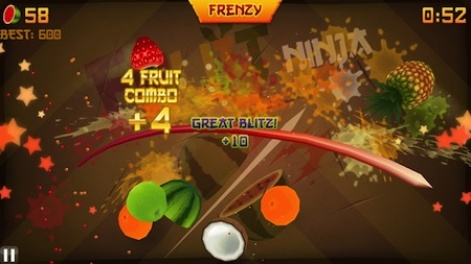
Fruit Ninja may have ensured that mobile, and particularly iOS, became Halfbrick's primary focus, but they've made it their mission to approach as many platforms as possible.
Jetpack Joyride
"Everything about Jetpack Joyride pretty much ruled," says Larsen of Halfbrick's next big mobile hit.
"We had a great time making it, the design came together perfectly, and we created a system that enabled us to really play with all kinds of fun features.
"I was pretty confident throughout the development that Jetpack Joyride would be a major success, and that both our fans and the media would love it.
"We released the game to widespread acclaim, won the 2012 Apple Design Award, and updated it with ongoing content as much as possible."
Jetpack Joyride
Jetpack Joyride also performed rather well across numerous platforms, with downloads in the multi-millions and a strong and sustained chart presence.
"Incidentally, we're about to release one of the biggest updates to the game ever," adds Larsen, "with a new vehicle and jetpacks. It's just a great living, breathing product for us that we love to support and fans love us for it.
"We are very excited about the future of Jetpack Joyride and Barry Steakfries."
Expansion
The success of Halfbrick's back catalogue has allowed the company to expand, opening studios in Sydney and San Francisco to handle various elements of business and game development.
It also enabled the company to acquire Onan Games and its Mandreel technology in 2012, ensuring that Halfbrick can greatly reduce the time and expense of porting its games across iOS, Android, Flash and HTML5.
The company has even tried its hand at publishing, releasing Spryfox's Steambirds: Survival towards the tail end of 2011.
Beyond that the company has capitalised on the popularity of its games with merchandising, and while Larsen says "we're still a games company," it's something Halfbrick intends to pursue.
Indeed, it's reaching out on several fronts, most notably in the East thanks to the spectacular success of Fruit Ninja.
"It's really blown up in an amazing way," says Larsen. "We've been number one on the App Store in China longer than any other country, and that has helped our brand become a phenomenon.
"We now have a lot of awesome partners, friends and opportunities in China, and it's definitely one of our top priorities in the coming months and years."
Philosophy
Despite all this, Halfbrick is reluctant to let business and the desire to grow get in the way of designing games.
This is evidenced by the studio's latest release, Fish Out of Water, which surprised many when it released with a premium price tag earlier this year, despite the huge bump enjoyed by Jetpack Joyride when it switched to F2P.
Fish Out of Water!
"We love rapid prototyping, and if it isn't fun, it hits the bin," says Larsen. "A good example of how we adapt this style when the market changes is in regards to freemium games.
"We don't start with the monetisation model then try to add fun to it. We want to embrace new ways to monetize and increase engagement and virality, and simply start prototyping with those things in front of mind."
Fish Out of Water, a game that started out as a surfing title and evolved into a free toy and then ultimately a full release, is a good example. It wasn't designed as a F2P game, so it launched as premium.
"At the end of the day we want quality, and we know Halfbrick can get there if we stick to our style and take the time to iterate properly," says Larsen.
Rapid Change
Reflecting on Halfbrick's life so far, Larsen is enthusiastic about the future of both the company and mobile industry at large.
"The past few years have been truly amazing," he says. "I've been around for billions of downloads, seen developers come and go, and watched the market change faster than ever before.
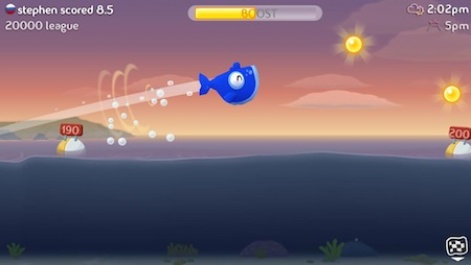
"Every second has been a blast, in no small part because you always know there's something new around the corner. This isn't a place for stagnation - as soon as you achieve one goal, ten more will appear."
As for the future, Larsen believes that Halfbrick's journey - "We've tried it all and will hopefully do it all again!" - its experimentation with different platforms, and its commitment to quality will see the company flourish.
The Halfbrick team
"A pretty key goal for Halfbrick is definitely to solidify itself as one of the all-time greats in mobile games," he says.
"We've made five pretty huge games, but we always want to improve!
"It's important to create a legacy and value for fans, so that we can always be relied upon for quality content. It's about maximising the Halfbrick brand.
"Not every game will become a Fruit Ninja in terms of sheer numbers - it's fine to avoid setting that as an automatic benchmark of success for yourself. But if we commit to making every game a valued part of our portfolio, it helps lift everything up with it."
